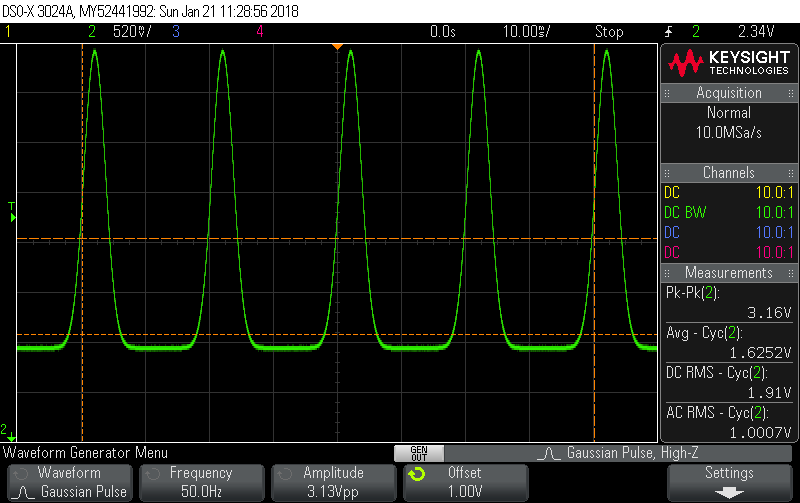Here’s a 1V rms Gaussian Pulse sitting on top of a 1V DC offset:
Fluke: AC 999mV DC 1.642V
no-name: AC 900mV DC 1.645V
You can see the no-name’s sine wave assumptions really let it down in that case.
But for the lack of an alternate negative swing, that signal isn’t a million miles from current signals you’ll find around the home. Compare it to the picture of a CT around the feed to my washing machine in this thread: Phase measurement and correction in IoTaWatt - #17 by dBC.
That’s why when calibrating Irms on your energy monitor (which measures True RMS current) you need to use a load that’s as close as possible to sinusoidal (typically a big heating element).
